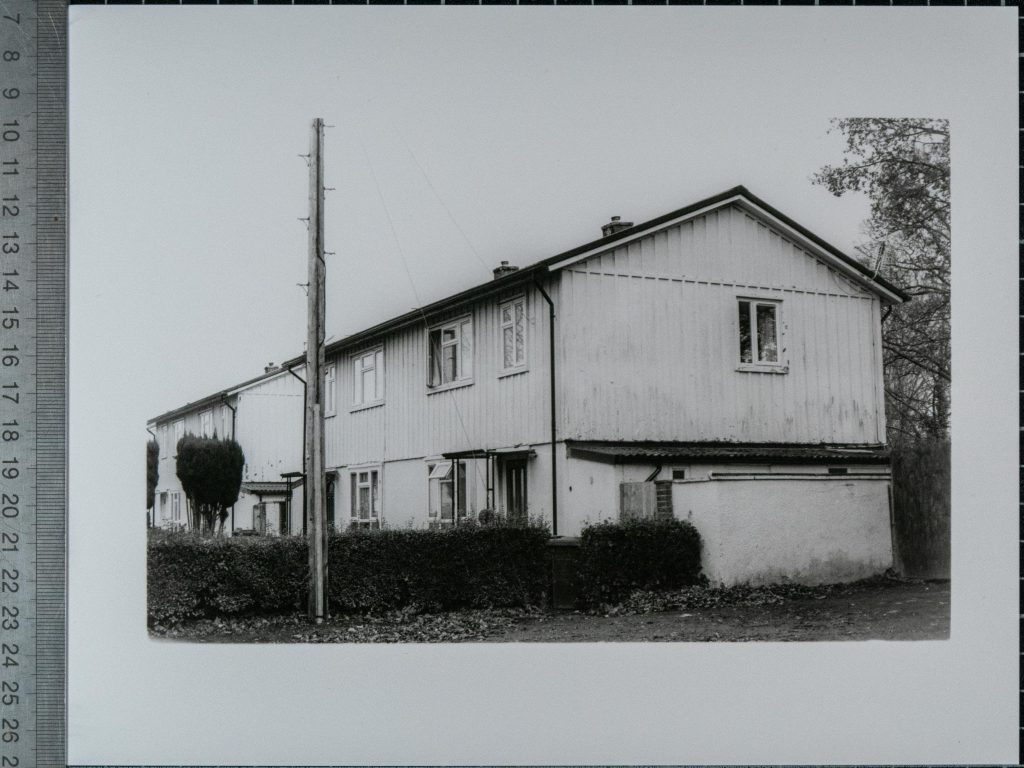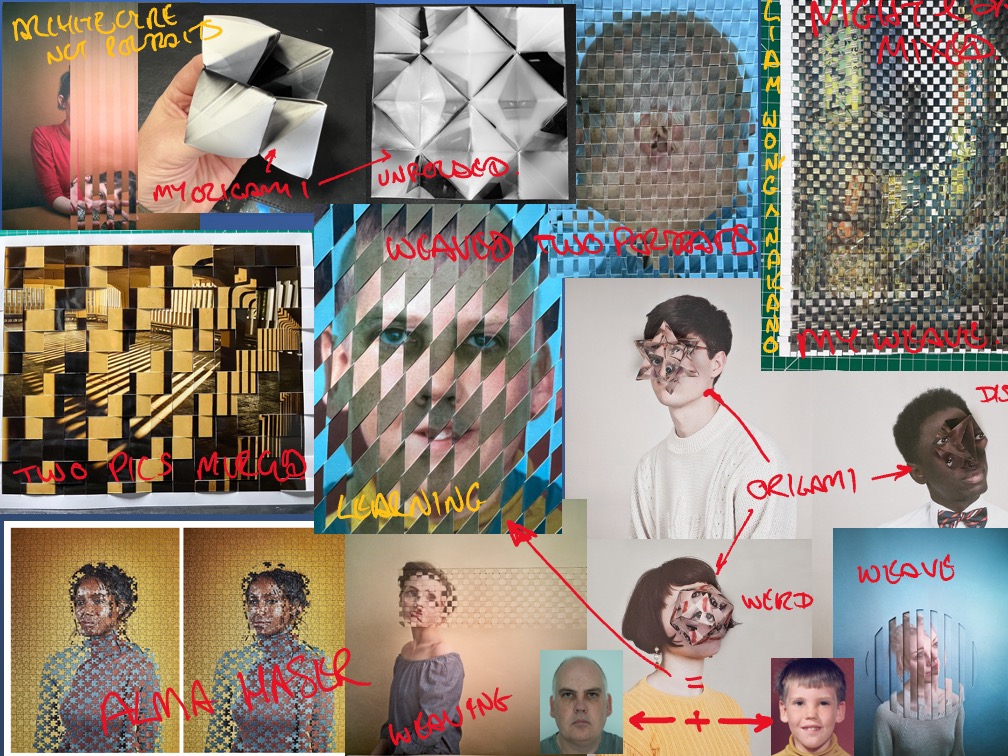At the end of last year, Alice gave us a task to create an A3 size board containing references, text, quotes and examples of images that we were interested in related to our year-long project.
My year long project so far has been a proper mixed bag, some print destruction, some negative distressing, some architecture, some portraiture so I put three boards together using my computer and PowerPoint along with the graphics table so I could scrawl directly onto the digital page.
Before you see my boards below, I’ve got to congratulate my coursemates on the quality of their immaculate research boards. There were some sleekly designed pages containing lovely text, quotes and images. In fact, I felt that mine were on the rubbish side at first. Then I considered it further and my boards contain mostly images that I’ve created already this year where there were few examples of others own work on their boards. This isn’t a bad thing, don’t get me wrong, it just means I think I’m being a little harsh on myself. Alice said that they reminded her of Dean Kelland’s sketchbook pages too which I took as a huge compliment as I have a lot of respect for him.
I also found that using the graphics tablet in powerpoint was good and it might even start overtaking my usual practice of doing everything in the sketchbook with pens, tape, glue and printouts.
Board Number One – BISF Houses.

This was a shoot from last week when I was visiting a location from my childhood that contains houses of non-traditional construction, or steel framed BISF houses. Waiting for an ambulance to visit my father over Christmas I was reading a book, Concretopia by John Grindrod. In it I came across a description of a house designed by the British Iron and Steel Federation that was designed in the years just after World War II and it struck me that I’d seen these houses in the Crowmoor Estate area of Monkmoor, Shrewsbury. It was fascinating to find out more information about them and even that when the government was looking for prefabricated options after the war, different versions of ideas were displayed at Tate Gallery in London so people could see the future of housing.
A great website can be seen here, the nonstandardhouse.com explains the reasons and how many of these style houses were built. I’d already photographed one of these last year in black and white and got a print out of it but never used it in my final submission and I find the textures, structure, and construction of these buildings fascinating.

During the walk around the area I noticed that a few of the homes were being refurbished and the standard corrugated steel cladding was being covered with plywood, insulation and then render. The couple of houses that had been completed already looked different and I felt a little saddened that this design classic was being covered over. Now I’m not oblivious to the fact that I don’t live in a BISF house and that they were probably not the most energy efficient of dwellings so I’m pretty sure that if they are council or housing association owned properties that they’re being upgraded to become more efficient.
My inquisitive brain was working hard to figure out what the main motivation was for the upgrade and then I wondered if I could just ask the residents. I wrote a letter explaining that I grew up locally and had a few questions about their interesting homes. I posted ten letters through the doors of some of the houses on Ragleth Gardens, 5 through doors of refurbed or in process houses, 1 through a different style refurbed house and the others through the doors of untouched, save for a spot of paint, houses. I included an email address for them to contact me with any answers but I suspect they’ll probably jsut ignore the letters. I wouldn’t blame them but I think that I’d be tempted to find out more history and engage with someone interested in their houses. We’ll see.
I wondered mostly whether they wanted them to be covered up to hide the origins, whether the name of the area “Tin Town” was liked by residents, or was it purely energy efficiency related. I think it would be a shame to cover over all examples of thes style properties and I’m glad that I have captured them on film and ccd sensor for posterity.
Board No 2 – Distressing Negatives

This board shows the results of a film camera being dropped in the puddle that is pictured in the bottom right image.
More about this film of negatives can be read in this previous post but I felt that this was an interesting direction to go in for the year long project. Is it symbolic of my history being washed away, or the water themed photos in this set being water damaged.
I mentioned to Alice that I might buy a disposable camera and drop it in a puddle or possibly even just take a film from a camera and expose it to some abuse. I do wonder though about this approach, should I subject it to abuse in the environment that the images are from or is that on the nose. Maybe I should take random photographs and then treat them with a random collection of fluids before washing them and developing them.
What would I write an essay about with this topic though?
Board No 3 – Weaving

This is the core of my year long project to date and as such it involves the interspersion of one image with another to produce another type of image. More research into this can be read in this post and some previous posts also.
Is joining the images together symbolic of anything, or is it my desire to show both sides of an argument at the same time. This may be my response to the polemics we see everywhere today. Averaging things out to come to an agreement suitable for all as it were.
Is that my essay subject or is there another in my work?
I think the weaving or joining of images is a strong subject but need to come up with a question or challenge to write about.
the other thing, as mentioned above, that might be worthy of an essay is around the documenting of buildings and places for the records of the future. I see this aspect with the Tin Town images and also with my parallel project of the zine I’m producing to document the town centre multi storey car park. Is it important to document places and locations even though they are everyday scenes that appear to be nothing special until fifty years later?
The tin town houses were constructed in the late 1940’s and are still standing 80 years later but a time will come when they become unfashionable or more economic to replace with more energy efficient houses. What then? What about their history?
Perhaps this is why I document pubs, car parks, shops, clubs, council buildings on a regular basis to prepare for the eventual demise of them.
One of my classmates Beth, suggested I could write an essay about the process of experimentation for the weaving or distressing boards and it seems like a good idea but Alice didn’t seem too keen on it at first from my reading of her response.
Writing all of this down and looking at the messy boards I’ve created I think it has helped me to come to a decision on the essay being about the documenting everyday places for posterity. Is it worth it? How do we know what to photograph? Is there any benefit of capturing these records? It kind of feels like I’m doing some of this and don’t know the reasons why I’m doing it already.
the following page was a list of words I felt compelled to write whilst looking over my boards. maybe there are some clues in here to what I should do next.

I’ll perhaps talk to Alice at our next meeting and discuss with her, rest assured any updates will be documented here on this reflective journal/blog.
Comments are closed.